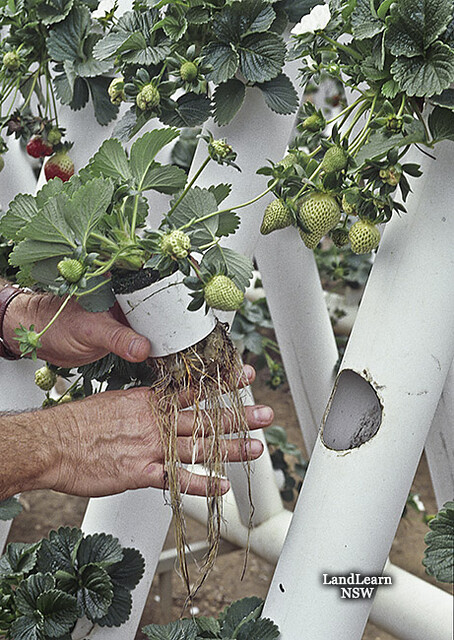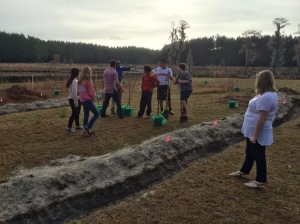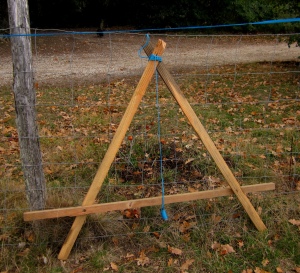Repurposing Hog Panels and T-posts
Community Interaction
One of our goals at PGM is to increase our community impact, interaction and engagement. When this happens, students gain even more opportunities to learn. There have been many partners that have helped us in our food forest creation like the admin of PGM, local entrepreneurs, parents of students, and our students themselves. Another type of interaction is with larger, locally operated businesses. Lowe's is one example of a large business that has helped us.
reDesigning for Food
We wanted to grow some muscadines and kiwi fruit but we couldn't figure out how to build the structure for them. After researching different materials for trellis and vertical lattice-type structures, the cost was higher than we wanted (posts, wire, tools to tighten the wire, small harware, etc). We also wanted the structure to be visually appealing while offering more than just a place to support the vines. After some brainstorming with people who have already built things like this, we made our decision: hog panels with t-posts made for an efficient use of resources. Now we had to acquire them.
Lowe's has done a great job of this. We purchased several things from Lowe's like our electric fence, hand tools and some plants. When PGM contacted them about donating material to our school, they were easy to talk to and offered their help. I picked up the t-posts and 16' hog panels with ease and transported them back to the school with some finagling.
 |
| T-post intended use |
 |
| Hog panels intended use |
Building the Trellis
Hog panels and t-posts aren't meant to be used to grow food. Well, at least not plants (Mrs. Smith probably wouldn't like a wallowing hog too close to the school building...at least not yet:) However, they work pretty well growing plants if we use them just right. We drove the t-posts into the ground. Each pair of t-posts were placed 6' apart from the other pair and about 4' apart from each other. This formed a 4'x6' rectangle. We bent the hog panel into an arbor until the short ends of the panel were about 6' apart. We repeated this 4 more times so that they didn't make a tunnel but made sort of border for the food forest.
Thanks to support from
outside the school, we are able to do things like this and I believe it makes PGM a better place to go to school and an easier place to learn.
 |
| This is how we use hog panels and t-posts. They end up being ~6' tall and 6' wide. |












